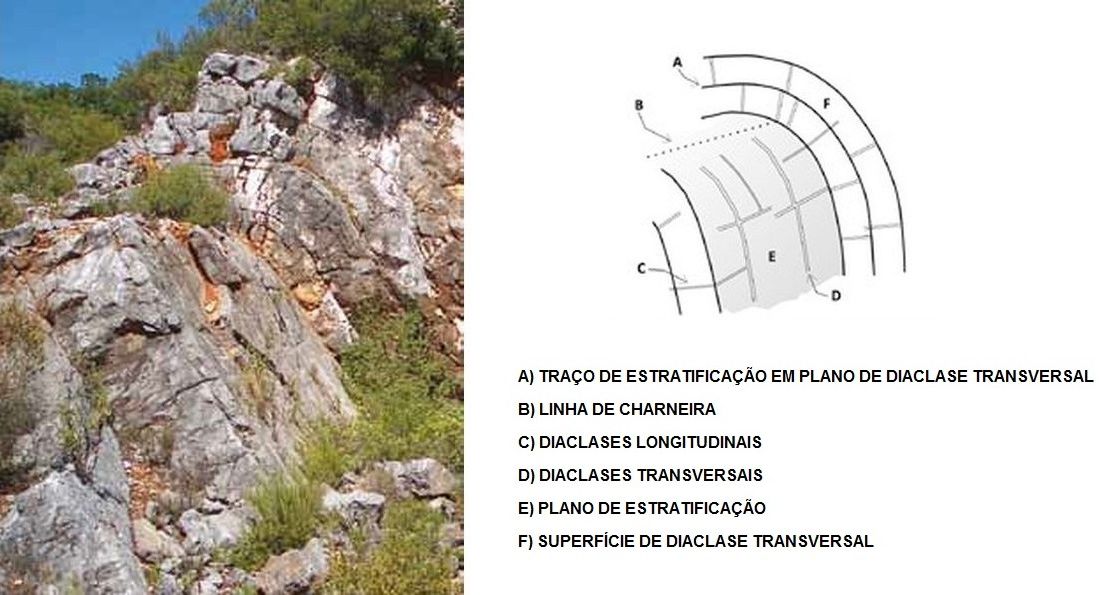Fold of Monsanto
Share Image
-
Fold of Monsanto
-
Lisboa e Vale do Tejo
-
Alcanena
-
Serras de Aire e Candeeiros Nature Park
Identification and Access
-
No
-
Access to Monsanto coming from:
- Alcanena (± 6.5 km) by N361. In Monsanto follow to Alexandre Herculano street, taking the dirt road on your right following to a quarry.
- Porto de Mós (± 26.5 km) by N362 to Serro Ventoso. There follow to Chão das Pias/ Cabeça das Pombas / Vale Florido. Before Cortiçal on the roundabout with the millstones, turn to Monsanto/Alcanena (S. José street/ 25 de Abril street). After more or less 3.2 km, you’ll find on the right a dirt road, that you must take it for 1.3 km, turning right on the cross. Keep going for 500 m and the fold is on the right, near a quarry.
GPS: 39.466537, -8.720597
Base Characterization
-
Cylindrical fold visible in an old front of a small abandoned quarry, in excellent conditions to see its geometry, in particular the vertical axial level, the sub-horizontal axis, NE-SW oriented and parallel to Arrife’s fault located immediately south. Its origin is associated with compressive movements that led to the thrust of Arrife fault during the Miocene.
Diaclase – fracture of a rock without movement
Fault - surface of rock rupture along which there has been differential movement of the rock on either side.
Fold – formed when one or several originally flat and planar surfaces, such as sedimentary beds, become bent or curved as a result of plastic (e.g. permanent) and ductile deformation.
Miocene - warm weather time period between the Oligocene and the Pliocene, roughly from 23.3 to 5.3 million years, belonging to the Neogene. The word Miocene comes from the Greek meion (less) and kainos (recent), referring to the fact that fewer recent species are found in these rocks than in more recent ones.
Thrust - formed by horizontal compressive stresses and so cause shortening of the crust. Because the hangingwall moves up relative to the footwall, most of these faults place older rocks over younger ones.
-
Local








